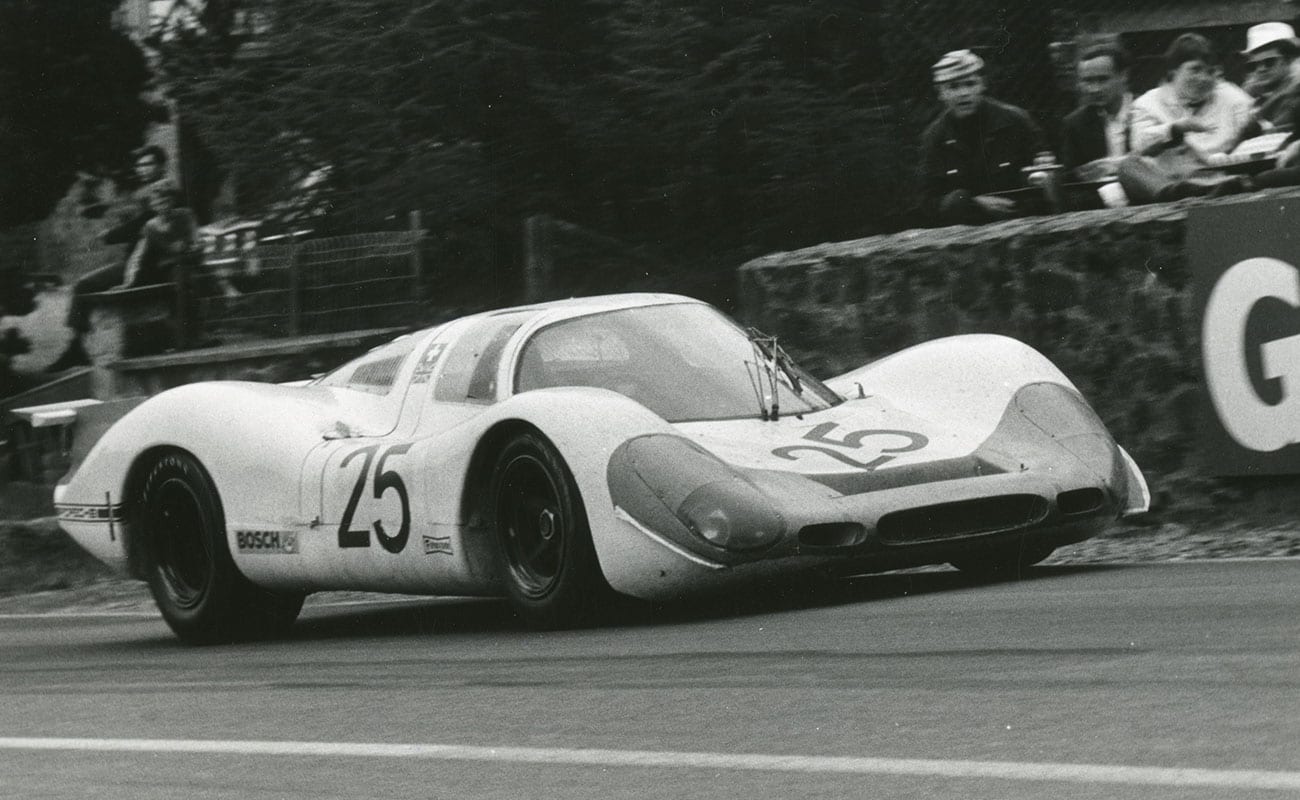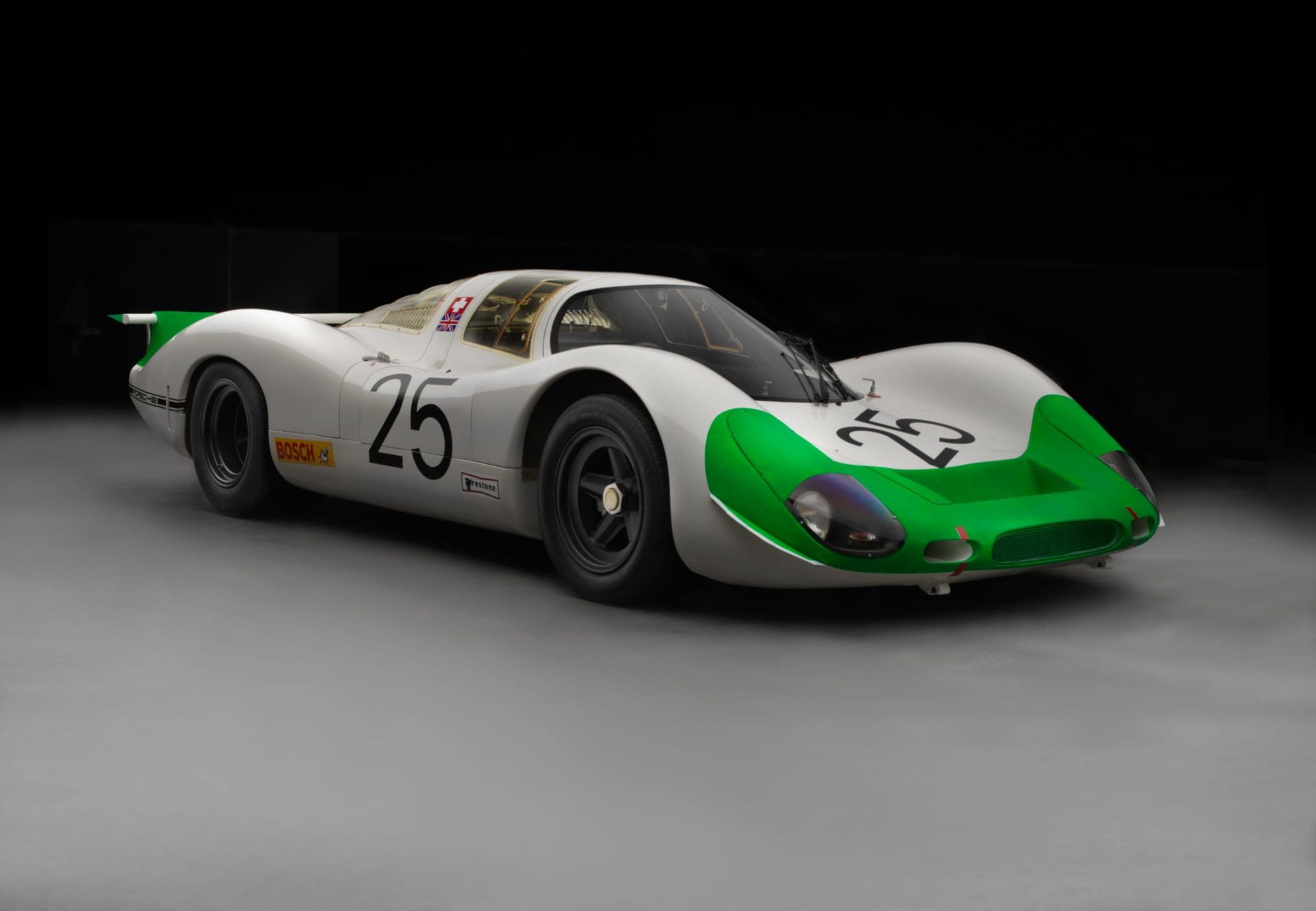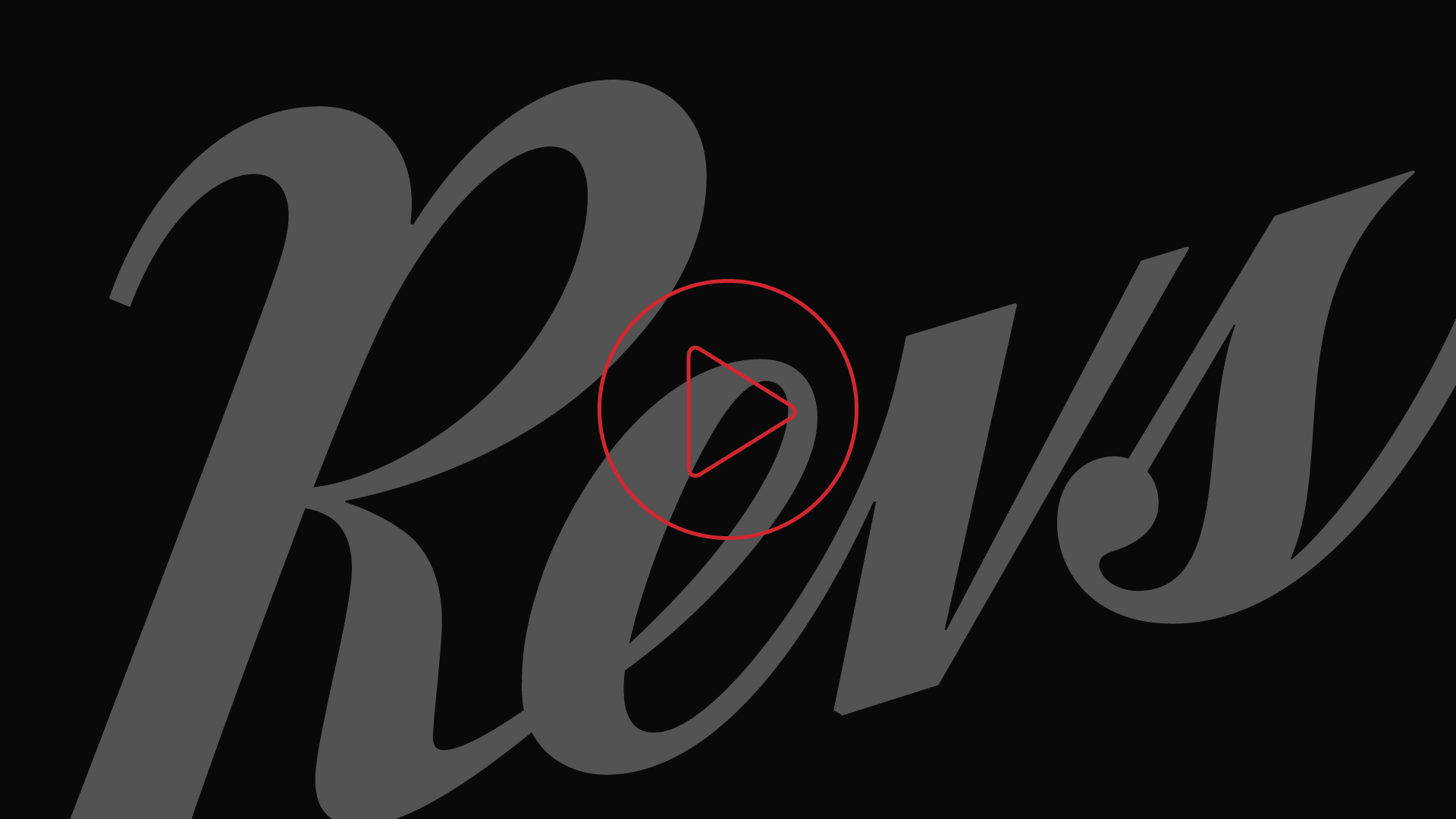Tech Specs
Flat-eight air-cooled engine, mounted midship, twin overhead camshafts, fuel-injected, 2997 cc, 350 hp at 8400 rpm.
Before/After
1969 Porsche


About the 1969 Porsche 908 LH
Despite using engines no larger than 2.2 liters, underdog Porsche lost the World Championship of Makes by one point in 1967. So the factory decided to even the odds. The FIA’s new three-liter prototype (Group 6) and five-liter sports car (Group 4) regulations adopted for 1968 presented the opportunity.
The 2.2-liter 907 started the 1968 season spectacularly with wins at Daytona, Sebring and the Targa Florio. The 908 followed shortly, enjoyed few victories, endured frustrating mechanical failures – and lost the 1968 championship to Ford’s GT-40.
Meanwhile, the 4.5-liter Type 917, built hard on the heels of the 908, was ready for homologation in 1969, but typically was too green to spearhead the Porsche world championship attack. That chore fell to the trouble-plagued 908, which by now had received such major changes as an aluminum space frame, a newlydesigned crankshaft, 15-inch wheels and a new five-speed transaxle.
In 1969 the display car won at the ultra-fast Spa circuit in Belgium, Jo Siffert/Brian Redman driving. Despite its superbly efficient appearance, the 908 LH was no easy car to drive fast. Beautiful but imperfect aerodynamics made the racers weave back and forth as speeds approached 200 mph, a proclivity as daunting to the drivers as to any competitor who might try to overtake. Brian Redman summed up his feelings for the display car, saying “it scared me stupid.” Terrified or not, Redman set fastest lap at 145.28 mph (a new course record) on his way to victory.
The most successful long tail campaigned by Porsche, this car also came second to a sister 908 LH at Monza and retired with a broken countershaft gear at Daytona. That one victory, a second and a d.n.f. were sufficient for top honors is explained by simple mathematics: to win the world championship in 1969 Porsche built a total of 52 brand-new racing cars. By contrast, John Wyer won the championship the year before using but three Gulf-sponsored GT-40s. But numbers were irrelevant to Ferdinand Piëch. Just consider how many new racing Porsches appeared during his era. Admittedly, each was a logical extension of the other, but the proliferation simply overwhelms – and was unmatched by any race car builder anywhere.
Photos – Peter Harholdt












